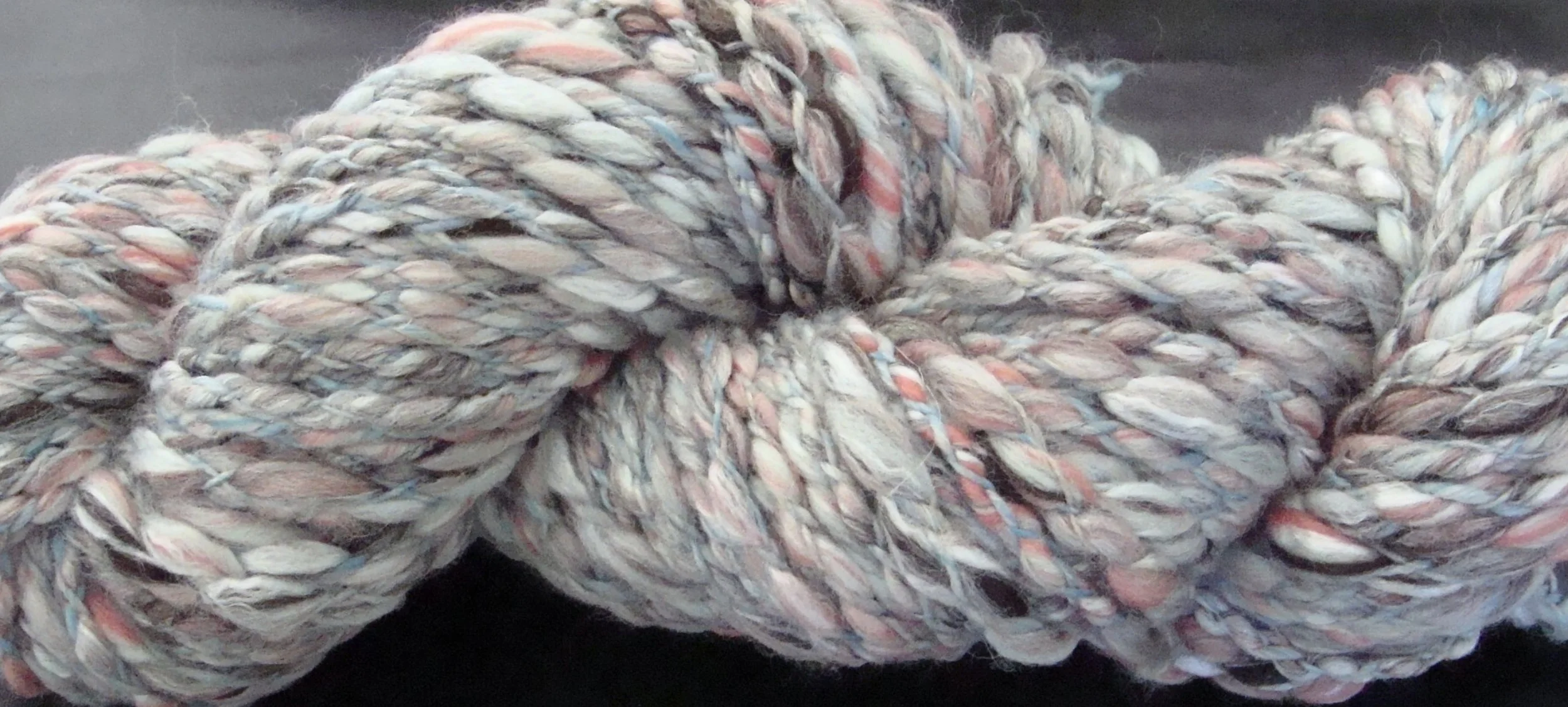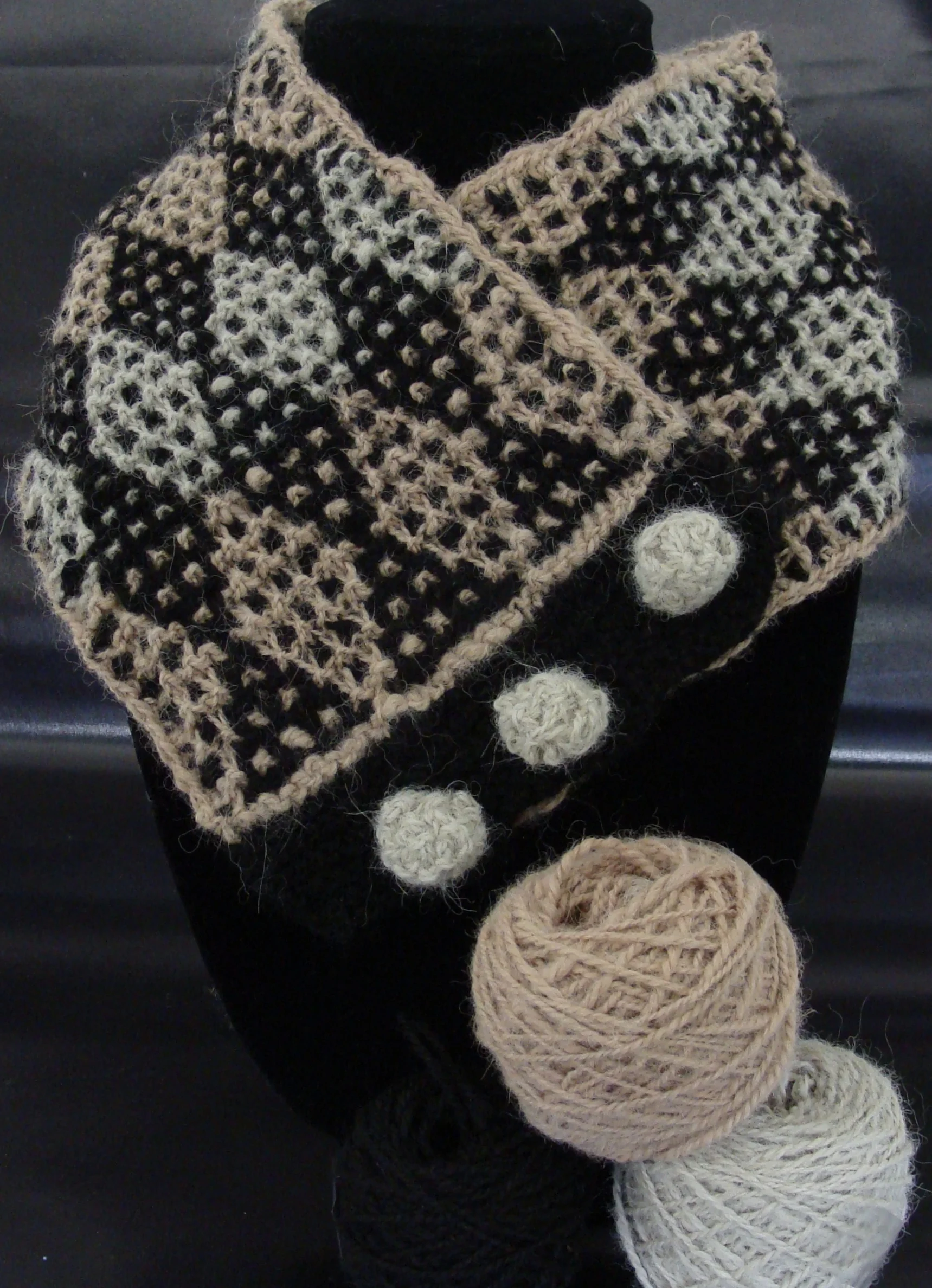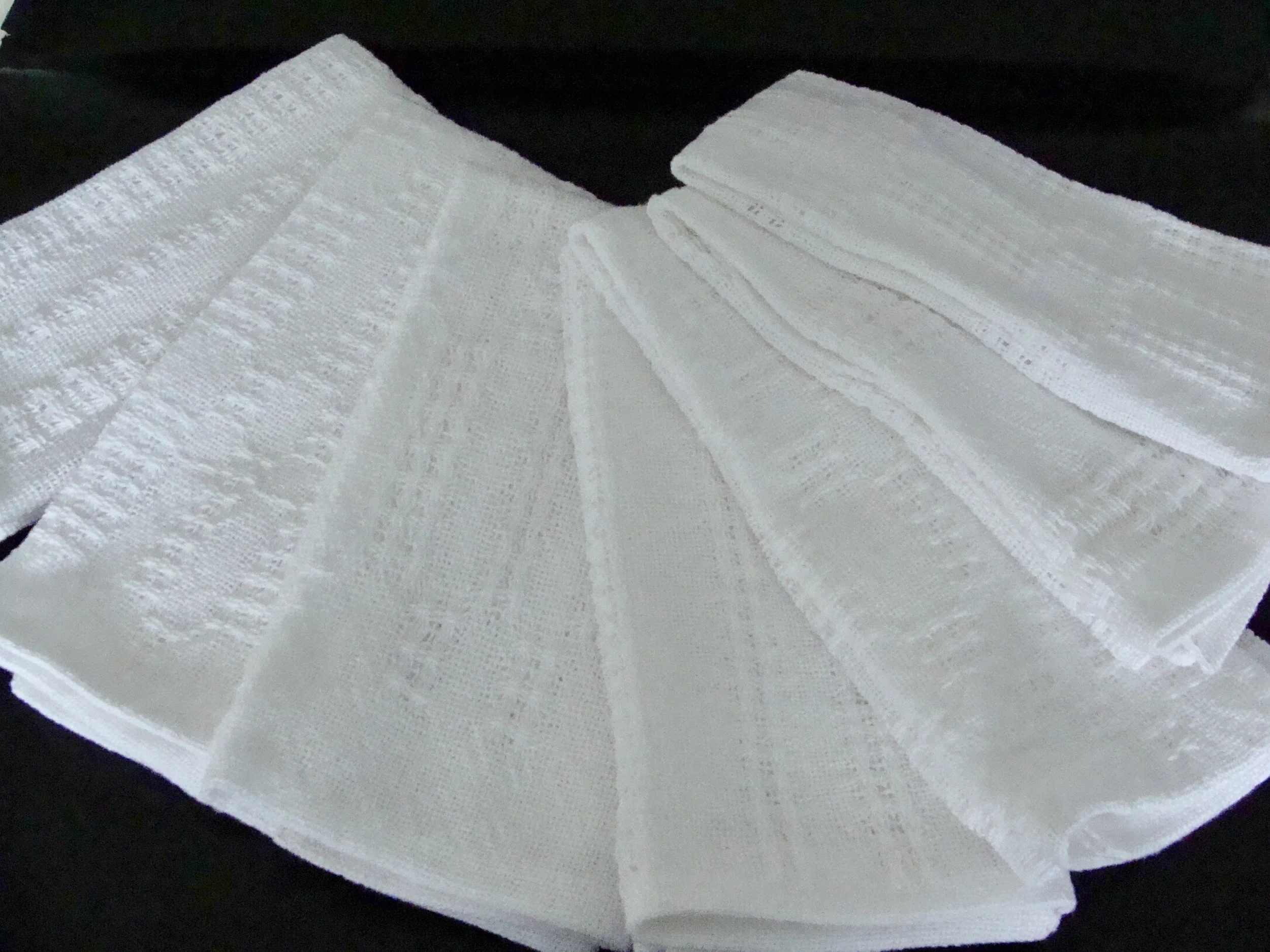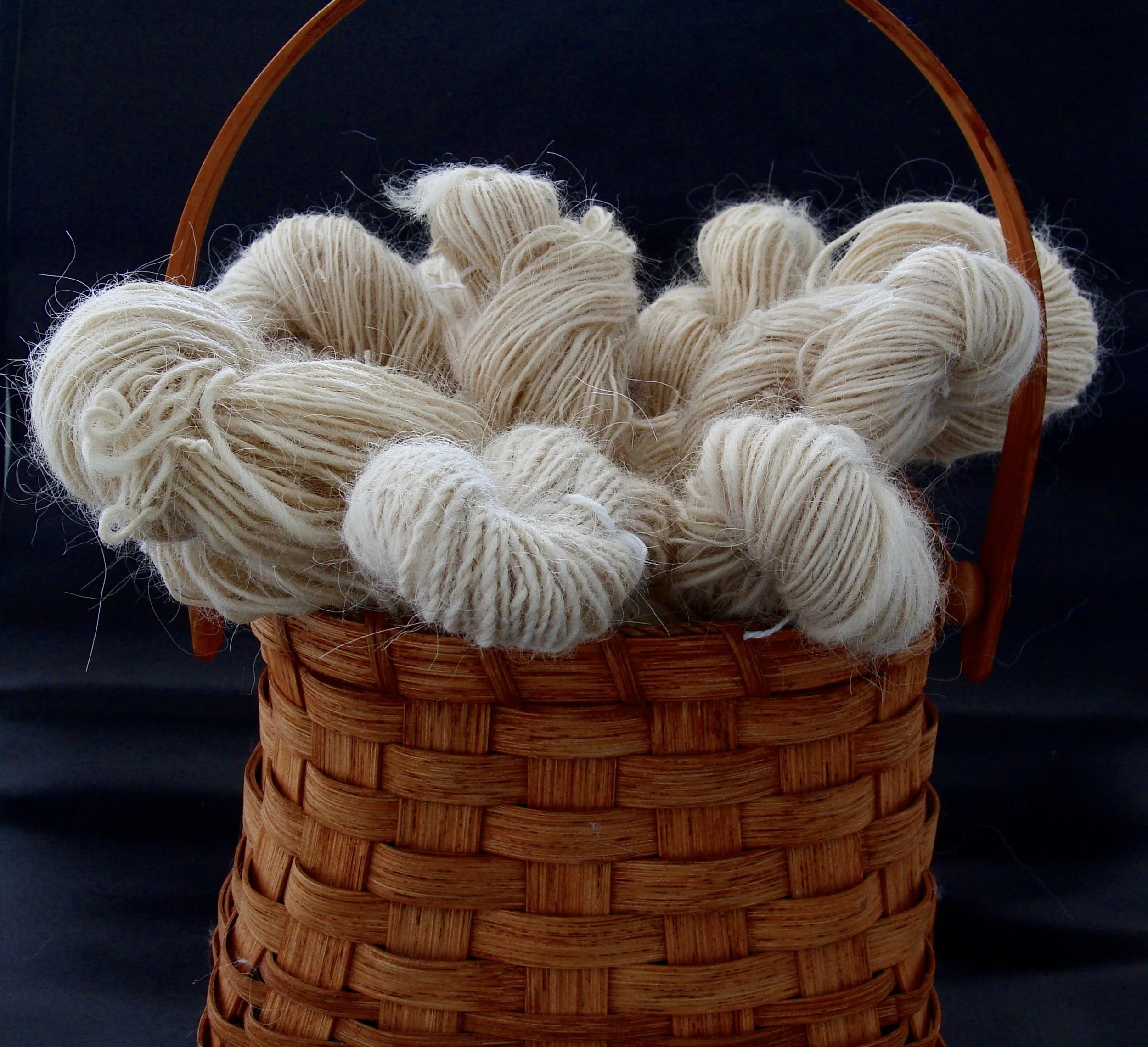Let's Spin . . . Bubble Crepe
What? Is that a breed of sheep? Or some newly discovered aquatic plant fiber?
No, actually it is a yarn construction technique. Crepe yarns are 3-ply producing a rounded yarn that looks like a 2-ply yarn with another ply wrapped around it. The construction of this yarn differs from a typical 3-ply yarn that is spun by taking three single yarns and plying them all together at the same time.
Before I dive into how to spin a crepe yarn, first a little about twist, more specifically twist direction. Twist is produced dependent upon which direction the spinner turns the wheel (or whorl on a spindle). If the wheel is turned counterclockwise or to the left, the yarn produced will have the fibers angled to the left like the center of the letter S. Likewise, when spinning with the wheel (or whorl) turning clockwise or to the right, the angle of the fiber will lean right as the letter Z.
The direction of the twist is particularly important when plying, the process of spinning one or more single yarns together. Typically when plying, the singles are spun in the opposite direction from which they were initially twisted; otherwise the yarn would end up being very over twisted and kinky. So, as an example, if two singles are spun clockwise (Z Twist), then when plied they would be spun together with the wheel going counter clockwise and thus the yarn produced would be a 2-ply with an S Twist.
Crepe yarns are created with three single yarns, but not all plied together at the same time. Instead, two singles are plied together and then this 2-ply yarn is plied with the third single and that is how the finished yarn looks like a 2-ply yarn with another ply wrapped around it.
I'll illustrate this in the following photos and captions.
First the fiber. Both of these fibers came in the June Fiber of the Month Club Box from Paradise Fibers. On the left is a blend of 25% undyed and dyed Flax/Linen Top, 25% undyed Mulberry Silk, and 50% Dyed Superfine Merino Wool Top in a colorway they called Peter Iredale. The fiber on the left is another blend of 60% Dyed Merino Wool and 40% Seacell, a fiber extracted from seaweed and resembling silk (colorway Cassiopeia). Both of these fiber blends are luxuriously soft!
I divided the four ounces of Peter Iredale and finely spun half as a Z twist single and half as an S twist single.
I then spun the four ounces of Cassiopeia as a fat S twist single.
So my three singles are a fat S twist single (Cassiopeia), a thin S twist single (Peter Iredale), and a thin Z twist single (Peter Iredale).
The first step is to ply the S twist fat single and the S twist thin single clockwise with a Z twist . Then that Z twist yarn is plied with the thin Z twist single, you guessed it, counter clockwise (S twist).
What distinguishes this as a bubble (or rickrack) crepe is the beadlike texture created by the contrast of the fat and thin singles. Some tips in spinning a bubble crepe yarn: 1) use contrasting colors for the fat and thin singles; I've seen some beautiful examples of the fat yarn being variegated and the thin singles black. 2) The first ply with the fat and thin S twist singles should be a little overplied for the best result.
This is a super bulky yarn coming in at 5 wraps per inch (WPI), 77 yards in 5.45 ounces. I used all 4 ounces of the Cassiopeia fiber and 1.55 ounces of the Peter Iredale fiber.
With the remaining Peter Iredale, I plied each of the singles with themselves using a center pull ball. I ended up with a Z plied skein and an S plied skein of fingering weight yarn (17 WPI) totaling 153 yards.
Reference: The Spinner's Book of Yarn Designs by Sarah Anderson



















